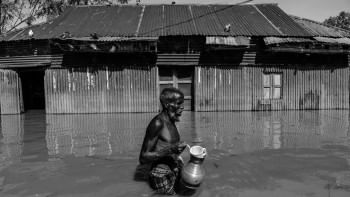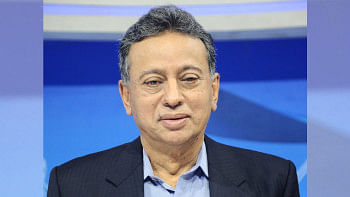Bonn climate conference falls short on key promises

As the climate justice movement gains ground, this year's Bonn Climate Change Conference (SB 62) served as a critical juncture, but fell short of the breakthrough many had hoped for. Instead, it exposed deep fractures around gender justice and loss and damage (L&D) finance, revealing how far global climate governance remains from real equity.
Women—particularly from Indigenous, Global South, and marginalised communities—continue to endure the worst impacts of climate breakdown: wrecked livelihoods, food and water insecurity, and displacement. Yet, their meaningful participation in negotiations and finance mechanisms remains minimal, often symbolic.
The SB 62 saw the launch of the new Gender Action Plan (GAP) drafting process, extending the Lima Work Programme on Gender (LWPG). A technical workshop was convened to develop gender-responsive activities ahead of COP 30 in Belém, Brazil, where negotiators agreed to reference intersectionality, structural barriers, and marginalised groups. But backlash followed quickly as Argentina and Paraguay resisted inclusive gender definitions, pushing for binary language, while countries like Canada, Norway, and Iceland defended rights-based frameworks. The exclusion there was structural: only about 35 percent of Bonn delegates were women, most without decision-making authority, often hindered by travel, childcare, visa, and institutional barriers.
Finance again fell short. Though mentions of gender-responsive budgeting, capacity building, and access to funding were inserted, no binding mandates or financial earmarks emerged. Feminist groups warned that without concrete commitments to grassroots and women-led initiatives, the GAP risks being merely aspirational.
Once relegated to the sidelines, L&D took centre stage in Bonn as the climate crisis escalates. Developing countries demanded clarity, urgency, and scale—while developed nations remained hesitant.
Key outcomes of the Bonn conference included: (i) vague advancement in the third review of the Warsaw International Mechanism (WIM), with tentative steps toward better coordination with the Santiago Network and the new Fund for Responding to Loss & Damage (FRLD); (ii) acknowledgement of the massive finance gap—estimated at $395–724 billion annually by 2025—but no hard commitments; (iii)preliminary discussions to integrate L&D into Biennial Transparency Reports, in which guidance, nonetheless, remains voluntary; (iv) a Baku-to-Belém Roadmap targeting $1.3 trillion in international climate finance, including $300 billion annually. Also, proposals to allocate $400 billion annually to the FRLD were raised, but again, no pledges followed.
The L&D board meeting ended with broad intentions but glaring omissions. Urgency was acknowledged, but not matched with action.
Bonn delivered some wins—intersectional references in the draft GAP and technical momentum toward COP 30—but persistent resistance, underrepresentation, and underfunding still loom large. If gender remains narrowly defined, the plan risks being diluted rather than transformative.
On L&D, SB 62 marked progress—from silence to recognition. Yet, no hard finance, clear mandates, or binding pathways emerged. While the house is on fire, negotiators are still debating who will hold the hose.
Development justice demands that women are not excluded from decision-making, climate finance, and land rights. Without gender-responsive funding, resilience efforts fail. Moreover, global credibility is at stake when aspirational language without financial backing deepens the trust deficit and imperils the 1.5 degrees Celsius goal. The clash over gender definitions mirrors global rollbacks of progressive rights, putting human rights under threat. If GAP language narrows, it risks codifying injustice rather than dismantling it.
Belém, Brazil, November 2025, is now the true test. These three demands must be met: (i)mounting finance commitments, (ii)solidifying gender justice, and (iii) enabling participation. Mounting finance commitments mean capitalising the FRLD with at least $400 billion annually, integrating L&D into the New Collective Quantified Goal (NCQG), and transforming voluntary reporting guidelines into mandatory obligations. Solidifying gender justice includes embedding inclusive, intersectional definitions of gender, enforcing financing, capacity building, and access for women and gender-diverse communities, and gender-responsiveness across all thematic tracks, not isolating them. The last but not the least, enabling participation means funding for low-income women's attendance and leadership, providing childcare, visa assistance, and institutional support and guaranteeing decision-making roles, not token presence for women in delegations.
Bonn laid bare political divides but brought no resolution. The urgency is not theoretical: extreme climate events have already displaced hundreds of thousands in 2024–25. Communities are paying the price for negotiation delays—with lost homes, destroyed harvests, and eroded rights.
To observers, Bonn's outcome may read like a draft priority list. But for frontline communities and activists, all eyes are now on Belém. A weak GAP or empty L&D pledges would signal business as usual, not justice.
Bangladesh offers a blueprint. Its push for grant-based L&D funding, rather than debt-inducing loans, shows how international commitments can translate into community impact. But national action alone isn't enough. Global systems must step up or risk failing those who need them most.
Gender justice and Loss and Damage are both at a tipping point. Belém must decide: pass the moment or seize it.
Farah Kabir is country director at ActionAid Bangladesh.
Views expressed in this article are the author's own.
Follow The Daily Star Opinion on Facebook for the latest opinions, commentaries and analyses by experts and professionals. To contribute your article or letter to The Daily Star Opinion, see our guidelines for submission.

 For all latest news, follow The Daily Star's Google News channel.
For all latest news, follow The Daily Star's Google News channel. 





Comments